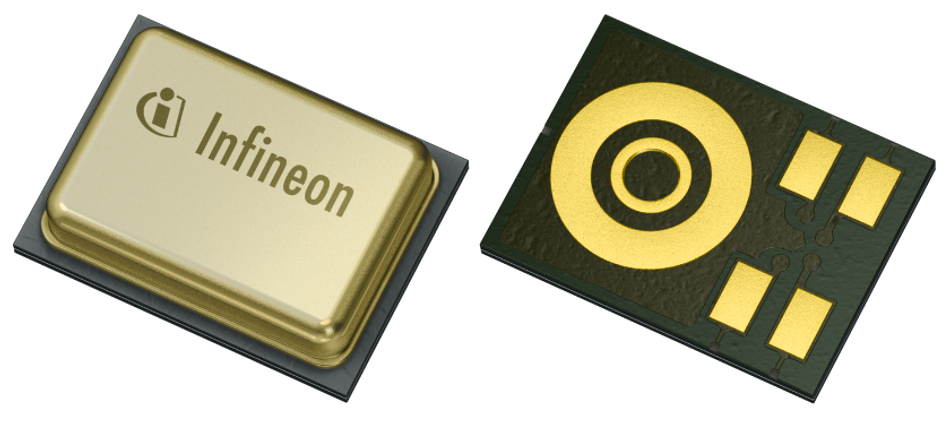Redefining hearing and communication with TWS earbuds and hearables
True Wireless Stereo (TWS) devices will be ready for any acoustic environment in everyday life

Wireless audio technology has evolved rapidly in recent years, with the potential to revolutionize both consumer electronics and health industries. But it has faced challenges, notably around being able to marry practicality and function with power and processing needs. Meaning wireless sound devices were often bulky, relatively expensive, and provided inferior sound quality compared to their wired counterparts.
Being able to reduce bulk while also overcoming performance challenges has been the core barrier to maximizing the potential of this nascent technology. Now, a new generation of True Wireless Stereo (TWS) devices that harness MEMS microphones could be the answer to these problems.
Making sound truly portable
Up until fairly recently, headphones and earphones were constrained by wires. Listeners had to remain tethered to their music or other entertainment devices, usually within a few feet.
The wires could be cumbersome and intrusive, especially when it came to things like exercise, with wires getting in the way of moving limbs at the gym or while out jogging.
But portable hearing devices changed all that. Utilizing Bluetooth standards, they use radio signals to carry audio data between a host device - be it a console or smartphone - to the ear device, with no physical connection between the devices needed at all.
The first wireless ear and headphones were not that advanced audio output devices – much like the original wired headphones and earphones which have been around for decades. They weren’t themselves able to regulate or amplify sound, clean up distortions, filter out background sound or do anything remotely ‘smart’ at all. That’s where earbuds came in.
Unlike traditional wireless headphones that often have a wire connecting the two earpieces, earbuds are true wireless. This means that each earbud is completely independent and connects to an output device via Bluetooth.Either both can be connected, or one can be – the master – which then relays the sound to the other bud.
The future of sound is smarter
The first hurdle – getting rid of wires – was achieved with the advent of TWS. At first, they had the same role as their wired counterparts: Playing music and voice calls. But to turn TWS into devices truly ready for everyday life – in the office, on a commute or the gym – new features were needed: Transparent hearing to stay connected to a user’s environment, active noise cancellation to enjoy silence and advanced beam-forming to have phone calls regardless of background noise. All of these functions require high quality microphones to pick up the audio input, which is then converted into a digital format to be further processed. The high performance components and advanced signal processing are power hungry.
To achieve best battery life, a truly smart device can switch between functionalities all by itself through context and location awareness. It could switch between active noise cancellation modes and transparent modes, depending on the environmental sound requirements – without the user having to trigger the change. For example, a device may amplify human speech or safety related audio signals in noisy environments. This takes the guesswork out of the whole process and improves the listening experience. At the same time, based on the users’ journey throughout the day, it can significantly reduce the microphones’ power consumption.
Augmenting human hearing: hearables
TWS devices are not reserved only to improve phone calls and audio listening – they can also be health devices such as hearables. Just like wearables are worn on the body – hearables are worn in the ear. They function like ear buds but have specialized focus on a range of health and lifestyle functions such as augmenting a person’s hearing and measuring biometrics.
Hearables vs hearing aids
Hearing aids are a vital tool for people with hearing impairment and consist of three basic parts - a microphone, amplifier, and speaker. The hearing aid receives sound through a microphone and this converts the sound waves into electrical signals. It then sends them to an amplifier which increases the power of the signals and then sends them to the ear through a speaker.
Being a medical advice, they are intended for use by people suffering a clinical hearing problem and usually need to be prescribed by a medical professional.
Hearables fulfil a distinct role alongside hearing aids, with a focus less on use for those with serious hearing impairment and more towards enhancing everyday listening experiences and helping those with mild hearing loss.
They do hold a number of advantages for people in certain situations. Firstly, you don’t need a prescription or medical intervention to use hearables. You can simply start using them. They’re less bulky and cumbersome than many hearing aids out there on the market – which are after all, designed more for function than form. They slip into the ear and look just like regular ear buds.
Hearables are also considerably less expensive than hearing aids, usually costing between $200 to $500, as opposed to medical hearing aids which can cost on average $2,372 for a single one[1].
While hearables are not a cure for hearing impairment, their affordability and flexibility combined with the smart features of leading ear buds means they can be a really effective option, especially for those that want to enhance their hearing only in certain situations.
Technology challenges
But wireless earphones, earbuds and hearables share the same challenges – the prospect of bulky design and the impact of noise. Earbuds need to be portable, i.e. small, but the audio functions need to be of good quality, otherwise they won’t be used.
A good measure for a microphone’s quality is the signal-to-noise ratio (SNR). SNR is measured in decibels and the higher the SNR value, the better the output. If an audio device has a low SNR mic, you will hear hissing from it – the transparent hearing mode will never sound like your own ears, but artificial and unpleasant. The higher the SNR, the less interference you hear, improving the quality of the listening experience.
Maximizing this SNR is something of a Holy Grail for microphones, but it’s often been easier said than done due to physical limitations – there is a trade off between form and function: Usually, better performance requires larger parts.
MEMS microphones revolutionizing design
What’s crucial to addressing these challenges is tiny, high-quality MEMS (micro-electro-mechanical systems) microphones. Much of the bulk of a traditional headphone or earbud is due to the many different parts needed to provide the advanced functionalities mentioned above. But technology such as Infineon XENSIV MEMS microphones help counter these challenges:They capture sounds in high detail with ahigh signal-to-noise ratio (SNR), while maintaining a small footprint - Thus enhancing a user’s experience in ANC or voice without adding bulk to the design.
It’s also important to only use as much power as needed in a given moment. With advanced processing to analyze its acoustic environment, a device can choose exactly which audio performance is required – if you do not need to pick up quiet sounds, a microphone can switch into a lower performance power saving mode. Previously, switching into different power modes caused audible artifacts and interruptions of the signal stream. Newest semiconductor technology allows to seamlessly switch power modes, i.e. up-and-down regulate power consumption without any disturbing sounds. This reduces the need for larger batteries and hereby also the size of the whole end product, or it can make up space for additional sensors to enable even more features. Of course, it also increases the battery life of the device, particularly important when users are travelling.
The need for an effective tech ecosystem
In the technology space, innovation does not happen in isolation – breakthroughs grow in and must be supported by a wider ecosystem. And that is also the case with hearables and earbuds.
MEMS microphones are just a part of the audio signal chain. Software and algorithms for active noise cancellation, event detection and beamforming have to be developed and improved. Hardware components need to further shrink and become more powerful to support ever advancing features. In short – OEMs, SoC providers, sensor manufacturers and others need to work together to take TWS and hearables to the next level.
Looking to the future
The growing appeal of MEMS technology in the field is highlighted by the fact the market is expected to reach $3,497.90 million by 2027[2], and the market shows no signs of slowing down.
Wireless earphones, earbuds and hearables for health uses are revolutionizing how we interact with sound – both in terms of entertainment and everyday hearing.
They can provide a new measure of freedom for designers and for movement while not compromising on quality, build size or style. MEMS technology is crucial to keeping bulk down while enabling a level of sound quality that means wireless tech is no longer seen as inferior to wired, and where wanting freedom does not mean making compromises on quality.
But all of this must be supported by a wider industry commitment to building a collaborative ecosystem in which each aspect of the technology, from design to software to MEMS microphones and everything in-between – all fits seamlessly together.
MEMS Microphones from Infineon
Infineon’s XENSIV™ MEMS microphones are designed to capture audio with high precision and quality all in a small package. They feature ultra-low self-noise (high SNR), extremely low distortions (THD) even at high sound pressure levels (SPL), very tight part-to-part phase and sensitivity matching, a flat frequency response with a low LFRO (low frequency roll-off) and an ultra-low group delay. Combined with selectable power modes and their very small package size, they provide top quality audio with a design that keeps size to a minimum.
For more information visit Infineon’s MEMS for consumer page.
About the sponsor: Infineon Technologies
Infineon Technologies AG is a world leader in semiconductor solutions that make life easier, safer and greener. Microelectronics from Infineon are the key to a better future. With around 50,280 employees worldwide, Infineon generated revenue of about €11.1 billion in the 2021 fiscal year (ending 30 September) and is one of the ten largest semiconductor companies worldwide. To learn more click here.
References
1. https://www.hearingtracker.com/how-much-do-hearing-aids-cost


